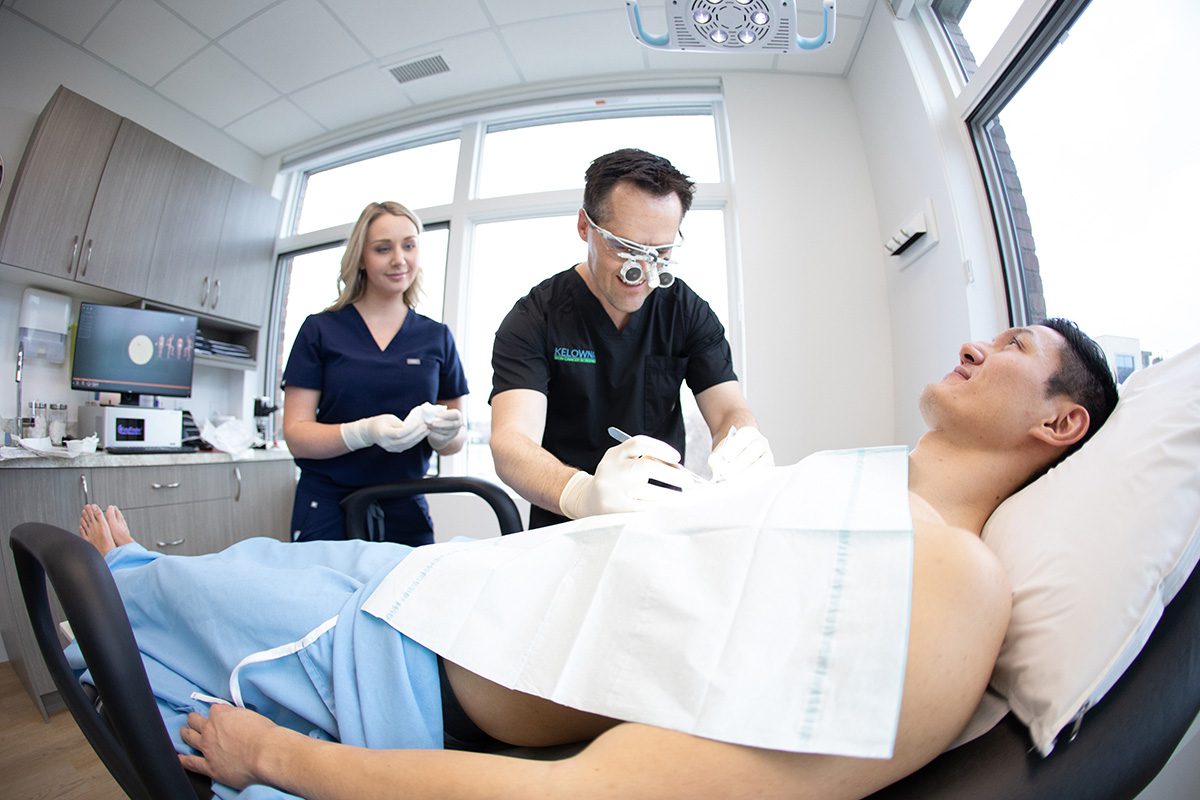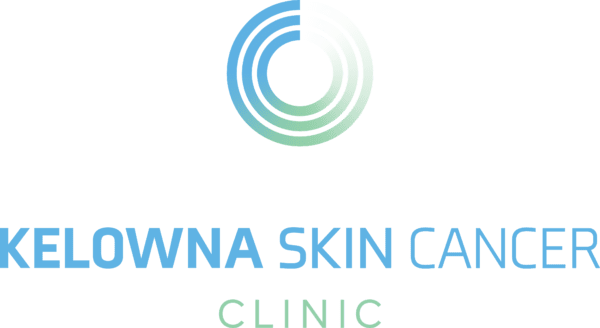SURGERY & BIOPSIES
The surgical route is common and efficient.
Skin cancer patients have the option to undergo skin cancer excision surgery. It is the most common form of treatment because it is quick and effective. The goal is to completely remove the cancerous tumour so that none is left in the body.

What to expect from this procedure.
Patients can choose between two types of skin cancer surgery.
Routine surgery
The surgeon removes the affected area of skin. Once the tumour is removed, the specimen is sent to the pathology department at Kelowna General Hospital. The pathologist will then confirm the diagnosis and inform the physician if the tumour was completely removed. In certain cases, the patient must return for a second surgery.
Mohs Surgery (Not available in Kelowna)
Mohn’s Surgery has the highest rate of success and involves several steps. Note: the patient stays awake for the entire surgery.
STEP 1: Examination & Preparation
The surgeon performing the Mohs procedure assesses the area where the excision will be done and often highlights it using a pen for reference. Local anaesthesia is then administered to completely numb the area to be treated.
STEP 2: Removal of the Top Layer
The surgeon removes the top layer of the cancerous cells using a scalpel. Some types of cancer can be deeply rooted with extensions that aren’t visible superficially. This is determined via a lab examination.
STEP 3: Laboratory Examination
The surgeon cuts the tissue into several sections and then codes them using dyes to plot a map of the site that was treated. The extracted tissues are then frozen in the laboratory. Next, the tissues are cut into very thin horizontal slices, just like a layered cake. The thin slices are later placed onto microscope slides, stained, and covered. This step is the most time consuming.
STEP 4: Microscopic Analysis
Under the microscope, the surgeon analyzes the base and edges of the stained tissue. In case he finds any remaining cancerous cells, he marks their location on the map.
STEP 5: Removal of the Next Layer
If a second round of tissue removal is required, the surgeon injects more anaesthesia, if required, to remove the next layer of the skin. These steps can be repeated multiple times until no cancer cells are left.
STEP 6: Wound Repair
When the site becomes free of all cancer cells, the surgical wound is either left open or closed using stitches, depending on the location and size of the wound. In some cases, reconstruction with a skin flap is required. At times, the surgeon seeks help from physicians like hand surgeons, plastic surgeons, or oculoplastic surgeons for wound repair.
Mohs Surgery is a potential treatment for these types of skin cancer:
- Invasive/Aggressive Basal cell carcinoma types
- Squamous Cell Carcinoma
- Lentigo Maligna type of Melanoma
Diagnosing the affected area.
Physicians will perform a routine skin cancer biopsy procedure, in which they will extract sample cells, to understand the type of cancer. Three types of biopsies can be conducted.
Punch Biopsy
A punch biopsy helps diagnose a skin lesion suspicious for skin cancer. It can either be used to remove the entire lesion, or to remove a small sample. A local anaesthetic is injected into the area, and a small piece of skin is removed using a sharp tube-like tool to provide a small sample that contains all layers of the skin. The area where the punch biopsy was completed will be closed with sutures.
Incisional Biopsy
An incisional biopsy takes a small sample of a larger skin lesion to determine a diagnosis. A local anesthetic is injected into the area, and the incisional biopsy is completed either by a punch biopsy or as an ellipse. It will get sent to a lab to be examined by a pathologist. If the results diagnose an incompletely excised skin cancer, your physician will discuss and help create an appropriate treatment plan with you.
Excisional Biopsy
An excisional biopsy is used to remove the entire tumour/lesion. A local anesthetic is injected into the area, and an excisional biopsy is completed by either a punch biopsy or by an elliptical incision. Once the lesion has been removed, it will be sent to the lab to be examined by a pathologist. The results help ensure the lesion was completely excised and there is no tumour remaining in the margins.
The considerations of surgery.
Both surgeries have an extremely high rate of success and low rate of recurrence. In the case of Mohs surgery, however, patients must travel to Calgary or Vancouver to undergo the procedure.
Explore more treatment options.
At Kelowna Skin Cancer Clinic we offer patients a variety of treatment options. The appropriate treatment will depend on a number of factors. We’ll provide advice to determine the right treatment for you.
